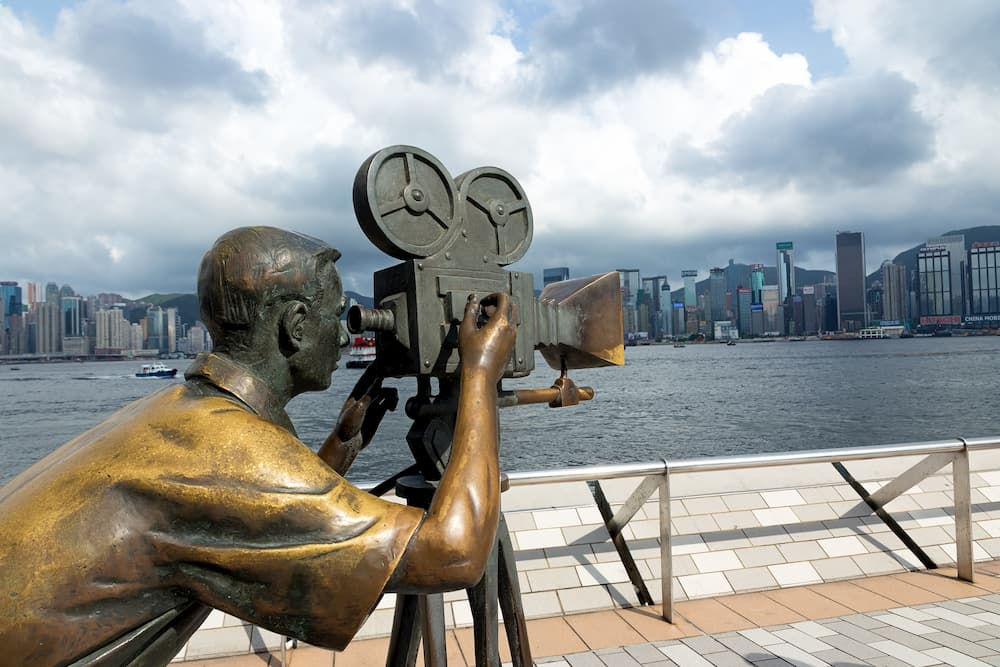
Chinese Cinematic
Splendid
Chi Culture
Topic
Chinese Cinematic
On August 11, 1896, a French tourist screened a short film, among other acts, presented at Youyicun, a teahouse at the Xu Garden entertainment complex in Shanghai. This was the first occasion of a film (motion picture or movie) being shown in China. It was then referred to as a “western shadow play” a name taken from Chinese shadow puppetry. In this early period film in China was regarded as a “foreign toy in the playground,” something especially enjoyed in Chinese teahouses as a Western entertainment. In 1905, a film shot by the Fengtai Photo Gallery and starring Tan Xinpei (1847–1917), a Beijing opera actor—Mount Dingjun (a.k.a. The Battle of Dingjunshan) was released. This consisted of an excerpt from a Beijing opera showing a battle at that mountain associated with the Three States period (220–280). Mount Dingjun was the first motion picture made by the Chinese, and was also China’s earliest theatrical film.
In 1913 China produced its first feature film The Difficult Couple, a Chinese-scripted silent drama about arranged marriage. During this time period when China was both semi-feudal and semi-colonial, the focus of Chinese film companies was primarily on making commercial movies, which were intended to please the general public and to make a profit. However, the 1930’s saw the rise in influence of the “left-wing film movement” a social and political movement initiated by films, as well as a movement on film aesthetics, and this is associated with the creation of a number of motion pictures of high artistic quality. These include Fishermen’s Song (1934), The Spring River Flows East (1947), and Springtime in a Small Town (1948). Upon the founding of The People’s Republic of China in 1949, films were used as revolutionary teaching materials, with the responsibilities of educating the people and consolidating the regime ideology. Representative works include The Long March (1959), Lin Zexu (1959), The Red Sun (1963), and The Red Detachment of Women (1970). Upon the end of the Cultural Revolution (1966–1976) and the subsequent era of Reform and Opening of the 1970’s and 80’s, Chinese cinema began to slough off the previously favored grandiose and panegyric mode and began to feature more content derived from everyday life. Outstanding movies include Little Flower (1979), Yellow Earth (1984), and In the Wild Mountains (1985). From the 1990’s to the present time, following the rapid social developments that have occurred, Chinese motion picture production become ever more diversified. The variety of styles is seen in the following: The Decisive Engagement: the Liaoxi Shenyang Campaign (1991), The Story of Qiu Ju (1992), Farewell My Concubine (1993), Dirt (1994), and Shower (1999), and Big Shot’s Funeral (2001).
From its earliest beginning—Mount Dingjun—with its film of a Beijing opera performance, Chinese cinema has inherited themes and expressive techniques from traditional Chinese art. Most Chinese moviemakers are deeply influenced by their experience of Chinese traditional theater and their “cinematic concept” is thus imbued with an intense sense of dramatization. Because of its innate relationship with traditional Chinese art, Chinese cinema manifests an “aesthetic of integration” rather than the “aesthetic of documentation” seen in Western cinema. An “aesthetic of integration” refers to the mixing of different types of art forms in the cinematic art which thereby becomes a new type of art that absorbs the features of other art forms. Chinese moviemakers may mix one or more borrowed aspects of other arts: sometimes deliberately creating a “realm of poetic imagery,” sometimes depicting vivid characters derived from famed literary works, and sometimes inventing dramatic and intricate plots while occasionally also incorporating charming music. This mixture of traits differentiates Chinese cinema from that of other lands, and is one of its most important characteristics. This can be observed in various scenes of great poetic imagery in the Oscar-winning Crouching Tiger and Hidden Dragon (2002), directed by Ang Lee (1954–) and starring Chow Yun-Fat (1955–). These include the lady knight-errant’s sword dance and agile moves; the perching birds startled to flight under the moonlight; the flashing bright eyes amidst the swaying bamboo shadows, the spreading of nets on a light boat (which symbolizes the road of life and death), and the rippling lake by the beautiful mountains. No matter the subject matter or style, if a motion picture is sincerely and wholeheartedly made, it will touch the viewer. This is a manifestation of the power of imagery. Reflecting the reality of social life and ethos of the time has long been the most important artistic principle of Chinese cinema; it has also become its core content. It concerns itself not only with significant social and historical changes, but also the vicissitudes of the country, as well as the daily life of common people.
With China’s becoming a member of the World Trade Organization (WTO) in 2001 and thus becoming a part of the global economy, Chinese cinema, has like that of other lands, had to face various issues connected with changes in audiences, marketing, and technology and the like. In the meantime in China itself there have been reforms of the industry and a number of thoughtful, artistic, and entertaining movies have been produced in recent years. Indeed Chinese-made movies now occasionally surpass various famous imported motion pictures at the domestic box office and have also achieved success abroad. Nonetheless there is still room for more development and expansion of Chinese cinema.



